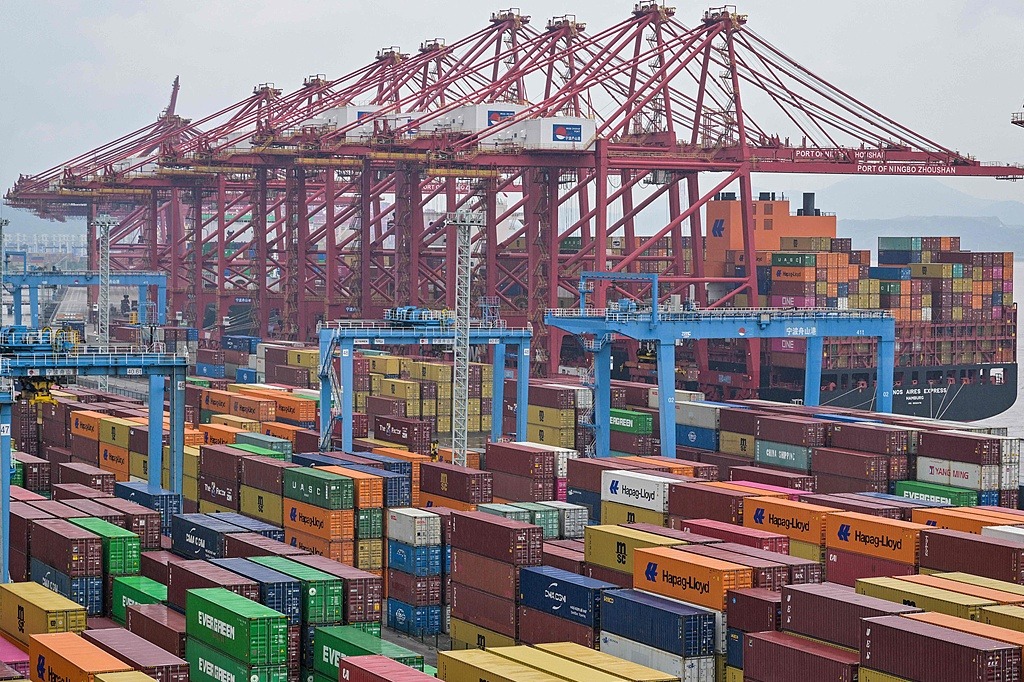How education can overcome virus challenge

Almost 70 percent of the world's students have been affected as governments in 160 countries have temporarily closed educational institutions as part of the measures to contain the novel coronavirus pandemic, according to UNESCO data. From pre-primary to high school to university, the pandemic has affected education at all levels, and poses four main challenges to the education system worldwide.
First, movement of people worldwide has been disrupted because of the anti-virus measures taken by almost all countries. Thanks to China's rapid economic development, and people's rising incomes and improving living standards, the numbers of Chinese traveling, holidaying and studying abroad have been continuously increasing. But since the outbreak, countries across the world have changed their immigration policies, even if temporarily, and implemented traffic control measures to contain the spread of the virus. This has drastically reduced the movement of people, international air travel in particular, affecting the education of students, including those seeking education overseas, dealing a big blow to the global education industry.
Second, the outbreak has seen some politicians, business leaders, professionals, civil societies, interest groups and individuals making claims and counterclaims on the origin of the virus, measures to prevent and control its spread, and research to find a cure or develop a vaccine for COVID-19. Such developments have intensified racism and xenophobia in some countries, and prompted many to stigmatize a particular group or country, which reflect their refusal to accept cultural diversity and that poses a threat to the existing world order and the global education industry.
Third, education is one of the most effective means for people to emerge out of poverty. But since the pandemic has prompted schools and colleges to shift to online classes to ensure students' education is not affected, many students from poor families could fall behind because they cannot afford to pay for high-speed internet connection and/or advanced devices.
A healthy education system is one in which the government and other stakeholders invest generously so it can keep improving, but they cannot do so now because the pandemic has severely hit economic activities. Which means children of poor and vulnerable families are more likely to drop out of school, and the rich-poor divide could further widen.
And fourth, physical classrooms, teachers, classmates, real books, face-to-face communication and social activities are indispensable to quality education. But since the outbreak, online classrooms, teachers taking online classes, students e-signing in to attend classes instead of getting on-the-spot attendance have suddenly become the norm, which people were not prepared for. Therefore, it is important for experts to evaluate this new education model that-instead of real classrooms, physically present teachers and students, and a palpable atmosphere-relies on internet technology and electronic tools.
To address these challenges, sincere efforts should be made to facilitate global mobility, for which it is necessary to reduce environmental pollution and the effects of climate change, fight terrorism, safeguard security, prevent and control infectious diseases, and alleviate poverty. Ensuring global mobility, and encouraging people to learn and experience transnationalism are key to provide the world with a large talent pool that can help solve global problems.
There is also a need to work out regional and global programs to make people from different ethnic and cultural backgrounds understand one another. No civilization is mono-dimensional, and no society or civilization can flourish without diversity. Diverse ethnic groups, cultures and languages are the hallmarks of a successful society. And by promoting diversity and inclusiveness, we can ensure global peace and friendship.
International organizations that were established after the end of World War II have made serious efforts to narrow the gap between the rich and the poor and achieved some good results. So it is necessary to let them play the coordinating role in helping people in less-developed countries and regions share the best practices of education and research of developed countries. Within a region or country, only through systematic coordination can we narrow the gap between the rich and the poor, promote economic development and achieve common prosperity.
Furthermore, the pandemic has made teachers and students aware of the importance of online education. Yet it has halted, temporarily though, face-to-face conversation between teachers and students, and among students from various countries. Therefore, irrespective of whether schools reopen soon or not, it is important to strengthen global cooperation in education so that students can receive proper education-whether in real classrooms or online. Which requires us to deepen global cooperation in education, by exploring new cooperation models.
The author is director-general of the division of international cooperation and exchanges at Xidian University in Xi'an, Shaanxi province. The views don't necessarily represent those of China Daily.
Today's Top News
- Nation capable of sustaining trade growth
- Sovereign wealth funds ramping up allocation to Chinese assets
- Common ground prevails over differences: China Daily editorial
- China's foreign trade up 2.9% in H1
- Task force formed to probe lead exposure
- Albanese's visit shows close economic links






























